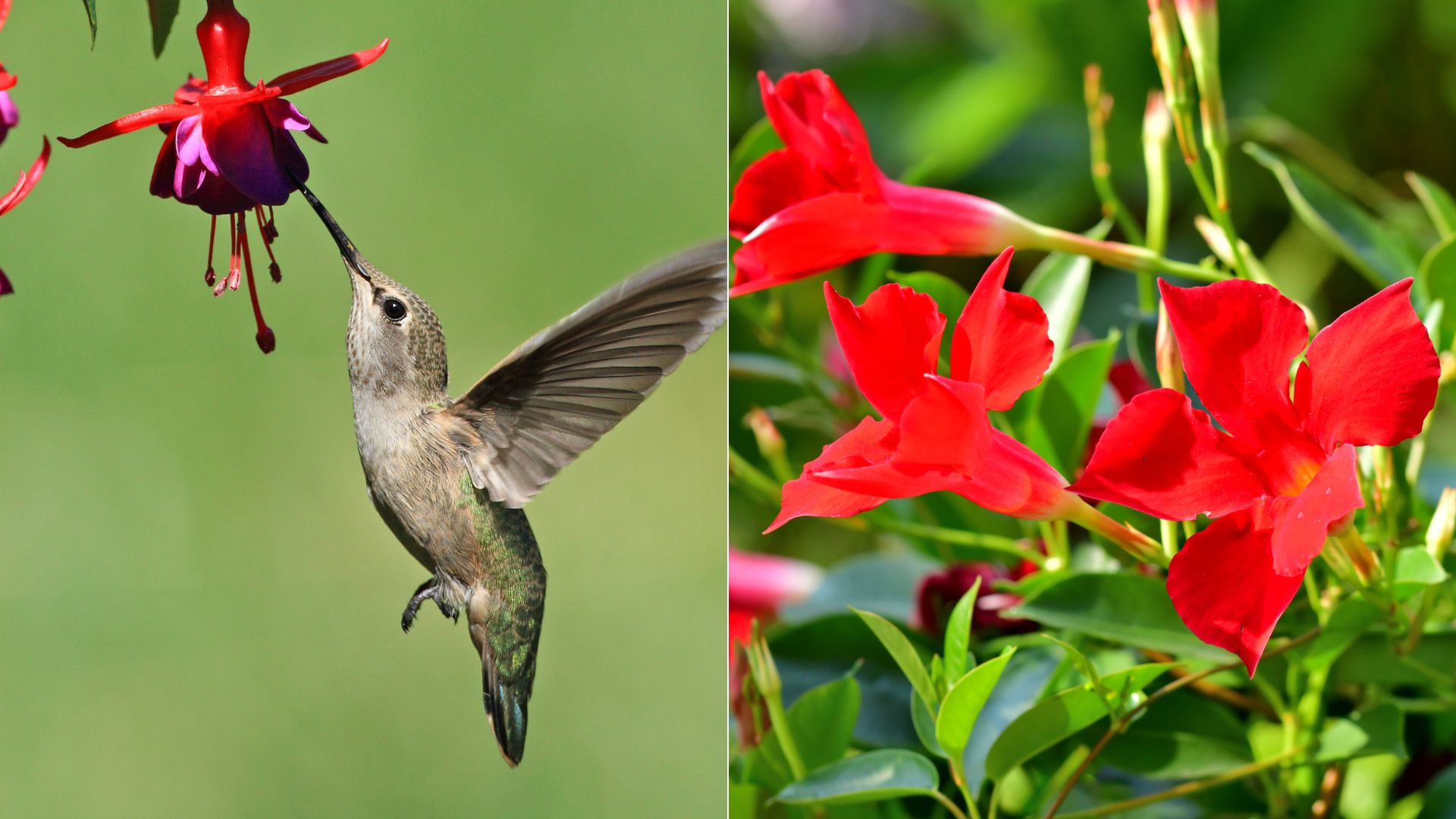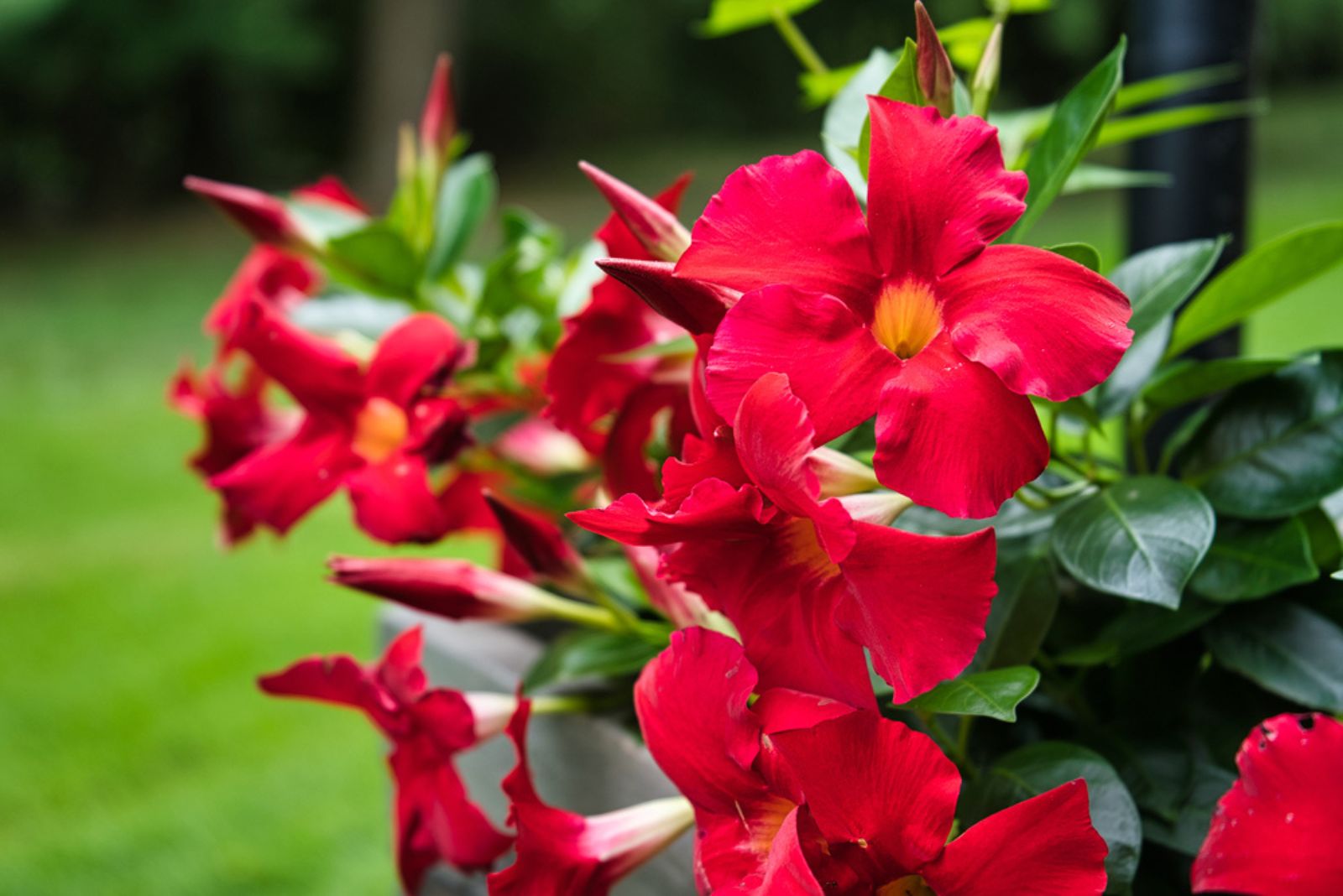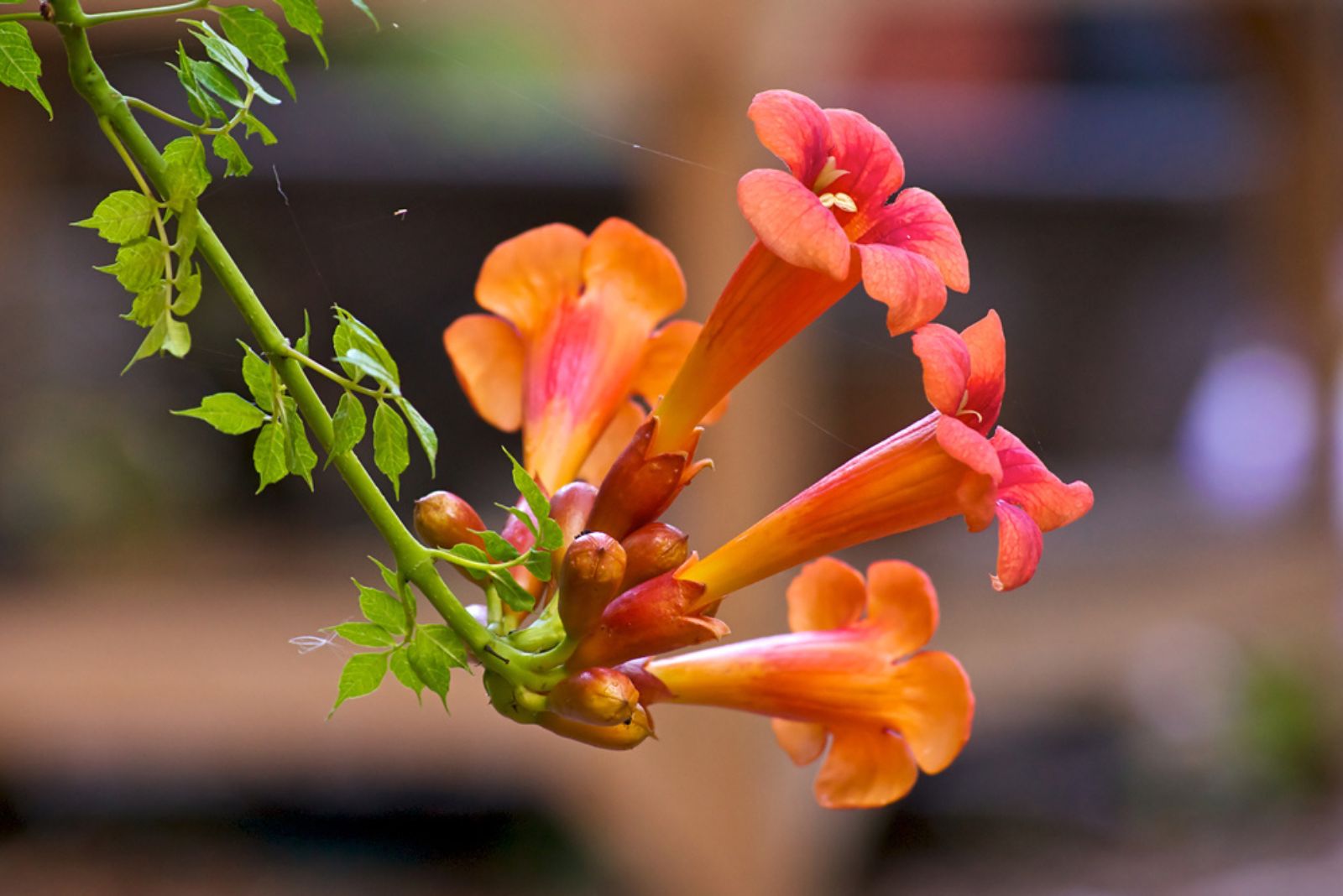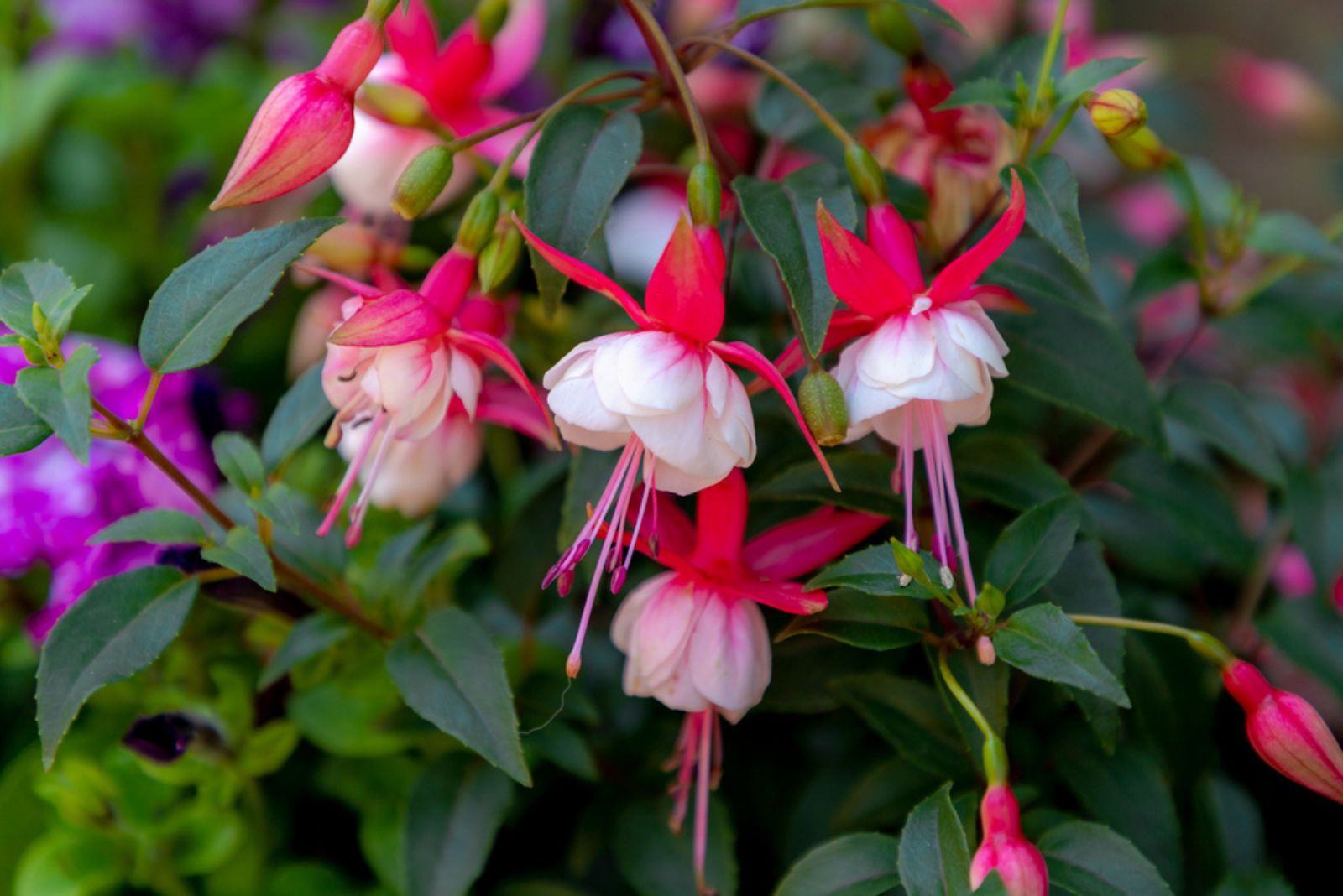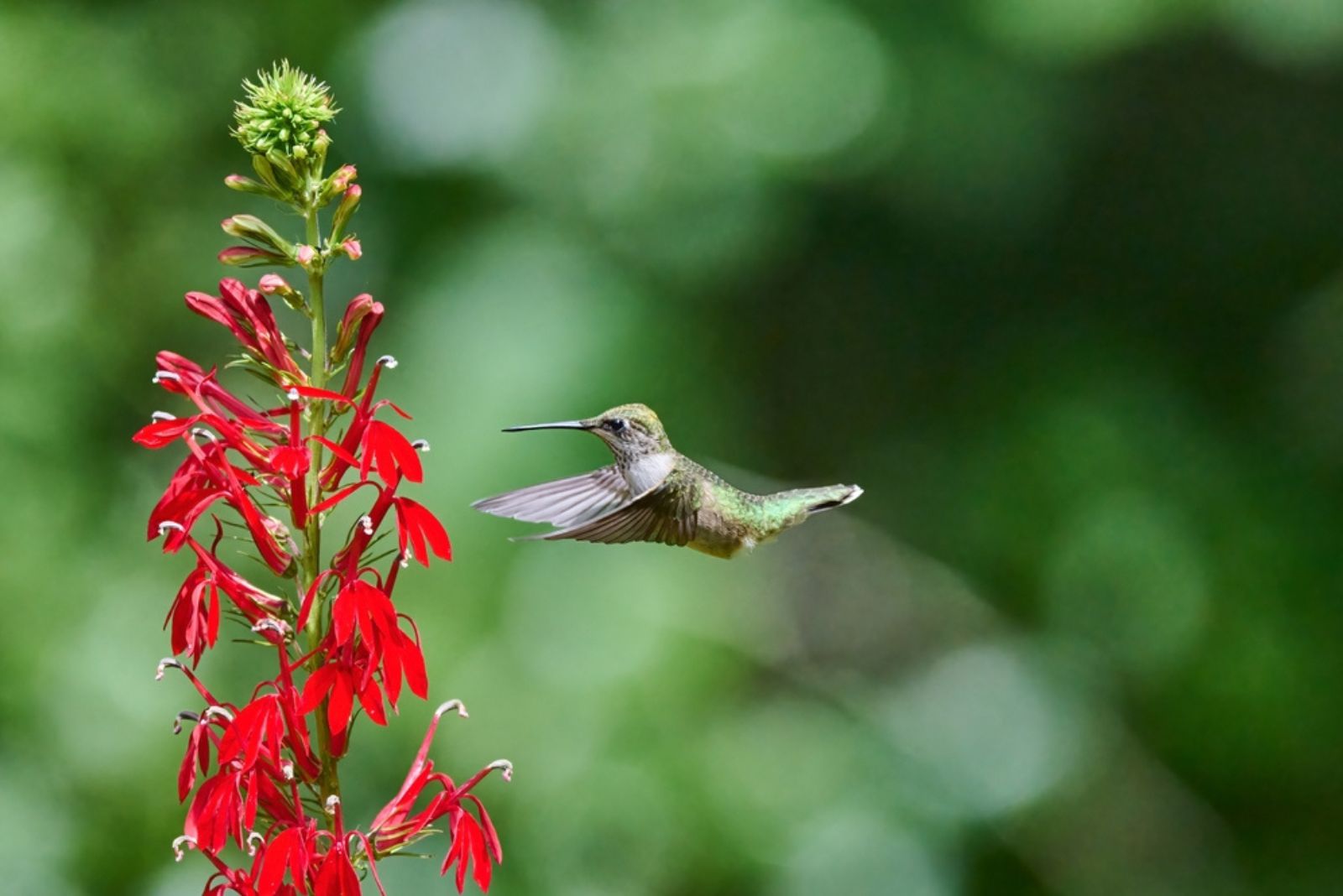Hummingbirds are tiny birds known for their vibrant colors, unique way of flying, and pollinating abilities. Not only do these birds make your garden look more lively, but they also spread pollen as they go from one flower to another!
The key to attracting hummingbirds is planting nectar-rich flowers that have bright colors. Make sure to plant some that bloom at different times so that you always have hummingbirds in your garden.
In this article, we are going to cover the best flowers to attract hummingbirds. So, let’s welcome these lovely creatures into your backyard.
1. Mandevilla
We are starting our list with a stunning flowering vine called Mandevilla. This plant produces large, trumpet-shaped blooms in shades of pink, white, and red. If you like the sound of that, then you should definitely consider growing this beautiful plant in your garden.
This plant is great for attracting hummingbirds, but also other beneficial insects such as bees and butterflies. If you live in a region with a somewhat milder climate, these plants can bloom all year round!
They are also relatively easy to grow. Keep them in full sun or partial shade. Regular watering and well-draining soil are also required to keep these plants happy and healthy.
2. Turk’s Cap (Malvaviscus Arboreus)
This is a versatile perennial shrub that produces vibrant red flowers shaped like small caps or turbans, hence the name. Hummingbirds absolutely love these little turbans!
This plant is native to the southern United States and thrives in a variety of growing conditions, including both sun and shade. It is also relatively drought and cold tolerant once established.
What’s also great about this plant is that it spreads quickly – it can reach up to 10 feet tall. So, if you are looking for an unusual, tall plant, then this is the perfect choice for you.
3. Trumpet Flower Vine (Hummingbird Vine)
The Trumpet vine, otherwise known as the Hummingbird vine, is one of the most popular purple flowers that attract hummingbirds. This lovely plant produces large trumpet-shaped flowers that are rich in nectar.
Not only do these flowers create a beautiful display, but they also attract a lot of beneficial insects and pollinators. They can also fill your garden with mesmerizing fragrances!
Trumpet flower plants can grow in both full sun and partial shade. They can grow pretty much anywhere and tolerate different soil types.
4. Salvia
Salvia is a beautiful flowering plant that comes in a variety of colors, including pink, red, blue, and purple. It is a favorite among hummingbirds due to its tubular flowers that are rich in nectar.
These plants can easily fit into any landscape, and they can also be grown in containers or hanging baskets.
They thrive in full sun and partial shade. These plants require moderate watering and well-draining soil. Although they are relatively easy to grow, you can still have some problems with Salvias.
5. Fuchsia
Here is yet another plant perfect for container gardening!
Fuchsia is a stunning flowering plant that produces bell-shaped flowers in different colors. These plants, along with the hummingbirds that they attract, can transform your garden into a fairy-tale!
Choose a hardy Fuchsia variety such as Fuchsia magellanica, which is also called the Hummingbird fuchsia. This plant has deep red flowers that produce a lot of nectar with a high sugar content, which hummingbirds absolutely love.
Most Fuchsia varieties prefer partial shade and well-draining soil. They like to be watered regularly.
6. Penstemon (Beardtongue)
Penstemon, otherwise known as Beardtongue, is a native wildflower that produces tall spikes of tubular flowers. These flowers are highly attractive to hummingbirds due to their shape and nectar content.
The best cultivar is Penstemon eatonii, which produces clusters of red flowers – and hummingbirds love vibrant colors!
Penstemon is a drought tolerant plant that prefers growing in full sun. However, it can tolerate growing in partial shade, too!
7. Bee Balm
Bee balm is also commonly found on the list of flowers that attract butterflies and hummingbirds. The abundant nectar hidden within the flowers provides a valuable food source for these tiny birds.
This colorful and aromatic flowering plant can really make your garden look more cheerful!
The plant produces flowers throughout the summer and thrives in full sun to partial shade. It also prefers growing in nutrient-rich and well-draining soil.
8. Trumpet Honeysuckle
Trumpet Honeysuckle, scientifically known as Lonicera sempervirens, is a vine that produces clusters of tubular, trumpet-shaped flowers in red, orange, or yellow colors. This plant is adored by ruby-throated hummingbirds!
However, most hummingbirds love honeysuckle as they produce an abundance of nectar, which serves as a valuable food source for these tiny birds. In addition, the vibrant colors of their flowers also catches hummingbirds’ attention!
These plants can grow and spread quickly – sometimes they can even reach up to 20 feet tall.
They are also relatively easy to grow. If you want to know more, then check out: A Complete Guide To Growing Climbing Honeysuckle Vines
9. Cardinal Flower (Perennial Lobelia)
The vibrant red flowers of the Cardinal Flower are tailored to attract hummingbirds. The tubular shape and rich nectar content of the flowers provide a reliable food source for these pollinators.
These are popular choices for containers and hanging baskets if you have limited garden space. They prefer partial shade to full sun and moist, well-draining soil. Regular watering is required to keep the soil evenly moist.
10.Columbine ‘Early Bird Purple Blue’
We saved the best for the end!
Meet Columbine ‘Early Bird Purple Blue’, a perennial plant that produces unique, spurred flowers that are rich in nectar. Hummers can easily access its sweet juice thanks to this special shape of the flowers.
These plants thrive in soil that is well-draining and rich in nutrients. They bloom profusely once exposed to full sun. Deadheading can encourage new blooms.

